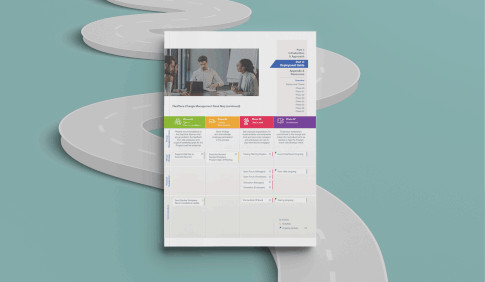“None of us is as smart as all of us.” – Ken Blanchard
When is the last time you were in a meeting and asked to come up with as many ideas as possible – to share any and all ideas since there was no such thing as a bad idea? My guess for most of you would be…never. Why would you spend everyone’s valuable time throwing out ideas that might seem unrealistic?
When I was a writer in Los Angeles, I would spend entire days crammed in a room with 10 to 15 other writers brainstorming over plot points, characters, and story arcs. By the time evening swept over the valley, there would be 50 or more ideas written on whiteboards and papers strewn across the table. Of those 50 ideas, we would use less than five, but they would be truly great ideas. Any one of us couldn’t have pieced together those ideas without the collective sum of that room. The adage of “quality over quantity” is one that you stick to through most of your professional career but when it comes to brainstorming, it is important to reverse this maxim before you walk into the room.
More choices almost invariably lead to better decisions. Ideas build off other ideas. Brainstorming allows groups to leverage all manner of viewpoints to generate more options and then pare them down to the fewest, most appealing to create breakthrough ideas. The key to getting great ideas is to first get lots of ideas. MeetingPRIMES.com offers expert techniques you can use to generate these dynamic and compelling breakthroughs for your organization.
Create the Environment
Groups that generate the best ideas do so because they have environments that promote openness, refrain from judgment, and encourage wild or abstract suggestions. Make sure each individual has sticky notes to write their ideas on – this is a great way to ensure everyone has a voice in the room and no single voice dominates the conversation. Participants can post their ideas on a shared surface to see patterns from others and generate further thinking. Display a visible timer to create a sense of urgency. Studies have shown that this method of brainstorming generates 20 percent more ideas and 42 percent more original ideas than traditional brainstorming techniques.[1] You will start to see the momentum build as ideas “snowball” on each other.
Establish the Purpose and Desired Outcome
The group needs to have a concrete destination in order to stay on track when brainstorming. Without a stated purpose and outcome, you risk the meeting devolving into chaos. You should have a short, balanced written statement prepared before holding a brainstorming meeting. It does not have to be “set in stone” and can be flexible depending on the thoughts of the group, as long as you keep a narrow outcome in mind. This outcome can be labeled as the WHAT. Next ask the group the WHY – why does it want to achieve this outcome? (Why is this important? What is the benefit/risk if it is achieved/isn’t achieved?)
Determine Obstacles
Once the group has decided on the one WHY they want to achieve the desired outcome, it is now time for participants to brainstorm on the reasons that may be stopping the organization from reaching its full potential. There can be any number of reasons including time, money, resources, or talent. It is common for an organization to have more than one. This is NOT an opportunity to play the blame game. Remember to curtail any finger-pointing as fast as possible or risk derailing the meeting.
Reach a Breakthrough
There is no guarantee the group will reach a breakthrough the first time through this process. In fact, it is more than likely you will have multiple iterations of brainstorming before you determine a viable opportunity. It may take you additional meetings, too. Brainstorming is not an exact science. When you do reach this point, have the group experiment with a storyboard to visualize where the organization is, where it is going, and what milestones exist along the way. This will allow the group to break down the larger outcome into smaller, achievable segments. The group can then develop the best ways to reach the milestones toward the larger breakthrough.
These are proven techniques that can help you create great ideas in the moment and more importantly, follow through on them the minute you leave the meeting. This is a key point as you can sustain the momentum from the meeting and continue to build upon the ideas generated and bring about real, positive change in your organization. The techniques from MeetingPRIMES.com do not stop when the meeting does – they permeate throughout your work. The father of brainstorming, Alex Osborn, once said, “Creativity is more than mere imagination. It is imagination inseparably coupled with both intent and effort.” MeetingPRIMES.com enables you to encourage powerful imagination with intent while ensuring that at the end of the day, the ideas aren’t left to gather dust on a shelf.
[1] Thompson, Leigh. “Creative Conspiracy: The New Rules of Breakthrough Collaboration” January 2013.


